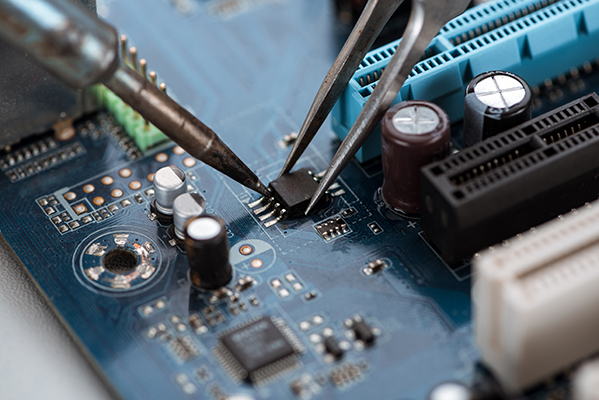

In the PCBA processing process, welding is a very important process. If there is a slight negligence in the operation and the relevant process regulations are not implemented, it will cause poor welding. The more common welding defects are: cold joint, false welding, continuous welding, cold welding, less welding, etc. So what is false welding? Why does false welding occur?

False welding means that during the PCBA welding process, although the manual visual inspection has already shown the effect of successful welding, sometimes the leads and solder joints can be separated by gently poking with your fingers. That is, it seems that the welding is successful, but in fact the welding fails. Because the false welding phenomenon is difficult to distinguish with the naked eye, it is generally found during AOI inspection.
The main reasons for false welding are welding iron tips, flux, component pins and welding tin quality problems. When the amount of flux is insufficient, the temperature of the welding iron tips are insufficient or too high, the pins of electronic components are oxidized, the quality of solder is poor, the welding time is not well grasped, and the furnace temperature is not suitable, etc., which will lead to false welding. In addition to the above reasons, solder paste printing problems can also lead to false welding, but now SPI equipment is used for testing after printing, so the false welding phenomenon caused by solder paste problems is relatively small at present.
The hazards of false welding: First, it will cause trouble to production and cause unnecessary rework and maintenance work, which will not only increase the cost of PCBA production, but also reduce the production efficiency of PCBA; Second, the false welding phenomenon will seriously endanger the reliability and service life of the product. If the false welding phenomenon of PCBA is not PCBA is not inspected and applied to the product, it may cause serious quality problems and safety hazards.
HoYoGo is a professional and reliable PCB manufacturer, including one-stop service from upstream electronic components procurement to PCB production and processing, SMT placement, PCBA testing, finished product assembly, etc. All our products strictly follow the acceptance standards of IPC-A-600-H and IPC-6012, and strictly control each quality barrier to ensure the stability and reliability of the quality of each product delivered to customers.
